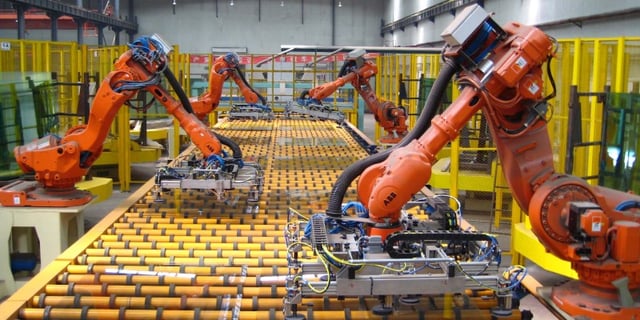The very first industrial revolution began sometime in 1760 with the increase in steam power usage, marked the rise of the factory system. Then came the second revolution following the introduction of electricity at the start of the 20th century. The third revolution began with the introduction of automation and information technology into factories. We now welcome the new age with Industry 4.0, the fourth, and certainly not the last, of the industrial revolution.
What is Industry 4.0 and what does it entail?
Smart factory, smart manufacturing, big data, Internet of Things, etc. are all part of Industry 4.0. Originating from a German project back in 2011 to promote the digitisation and innovation of manufacturing. The scope of the revolution has expanded far beyond Germany border and has reached even emerging markets.

Industry 4.0 brought a new era of technology automation, remotely control robotics connected with machine learning workstation, artificial and augmented reality, self-control robotics which requires minimal input from operators, etc.
One common terminology that you might have heard of recently is “smart factory” – the concept of establishing a connection between humans, machines and objects via the internet, thus merging the cyber systems with the physical, industrial world, enabling people to make decentralised decisions in real time.
What does a smart factory do? To simply put, a smart factory has the capability to take into account all the data and pinpoint the exact uncertainties within the entire supply chain, from the suppliers to the customers.
Smart factory responds to requests and adapts itself in real time, provides a fluid and constant communication from the market to the production line, thus offers a competitive edge for any clientele.
Read more: GE vs Siemens for the Industrial Internet of Things
To be qualified as a part of the Industry 4.0, the factory (or system) must include:
- Machines, devices, sensors and people that can communicate with ease
- Ability to provide actionable insights, promote information transparency
- Provide technical assistance when needed, during problem-solving process or when the situation is too dangerous for humans
- Machine learning algorithms to enable decentralised decision-making, become as autonomous as possible
The challenges
Adopting Industry 4.0 does not always bring rainbow and sunshine, challenges and disadvantages are almost always inevitable.
The number one concern is cybersecurity. In a survey conducted by PwC in 2016 also clarified the issue, more than 70 percent of the engineers participated in the survey agreed the revolutionary technologies would equate higher risks of having a breach in the security system.
IT service providers should consider this as a value added to their business and offer more intensive training and strengthen their security features to counteract the cyber-attacks.
Additionally, there is still a lack of qualified and experienced specialists to implement these new systems, plus a fair amount of reluctance from stakeholders and investors in launching the new technologies in large scale.
The shrinkage in the job markets as the machines are becoming more intelligent and starting to replace humans in high risk, dangerous tasks with more reliability. Less human supervision and the loss of high paying jobs could become a barrier for businesses to embrace industry 4.0.
What the future holds
New technologies are more than just doing the intense manual labour for you, they have the capability of drilling, undermining underused data that you overlook due to the sheer volume. And as we all know, the amount of data generated and lost on a daily basis is alarming, to be able to capture and turn those data into actionable insights in real time, will bring an immense competitive edge to the business.
Read more: 3 best Business Intelligence and Analytics vendors 2017
Industry 4.0 is blurring the line between Information Technology and Operational Technology and further merging the virtual and physical worlds.
The fourth industrial revolution was initially meant to revolutionise factories but it has the potential to grow and expand further beyond its four walls. We can clearly see its ‘smart’ implementations are making an impact in our everyday life with smart houses, smart healthcare, smart transportation and logistics, oil and gas, and many more to come.
Want to read more Digital Transformation-related content? Subscribe to our blog or download our whitepaper to learn more about this subject.
 English
English  Vietnamese
Vietnamese 


